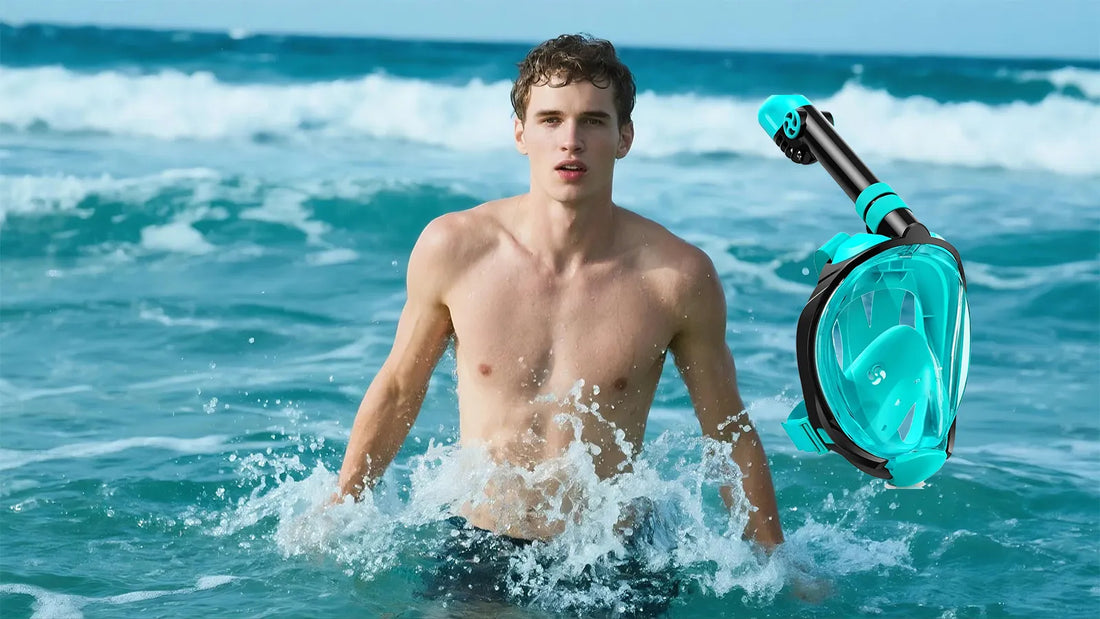Scuba diving is an exhilarating experience that allows you to explore the underwater world like never before. However, one of the most critical skills you need to master is how to breathe while scuba diving. Proper breathing techniques not only enhance your diving experience but also ensure your safety underwater. In this article, we will delve into the essentials of breathing while scuba diving, offering tips and techniques that every diver should know.
Understanding the Basics of Breathing Underwater
Breathing underwater is fundamentally different from breathing on land. When you're scuba diving, you rely on a regulator to supply air from your tank. This means you need to adapt your breathing patterns to ensure a steady flow of air. The key is to breathe slowly and deeply, allowing your body to efficiently use the available oxygen. Shallow or rapid breathing can lead to hyperventilation, which is dangerous underwater.
The Importance of Controlled Breathing
Controlled breathing is essential for maintaining buoyancy and conserving air. When you breathe in, your lungs fill with air, causing you to become more buoyant. Conversely, exhaling makes you less buoyant. By mastering controlled breathing, you can maintain a stable position in the water, which is crucial for navigating underwater environments. Additionally, controlled breathing helps you conserve air, allowing you to stay underwater longer.
Techniques for Effective Breathing
There are several techniques you can use to improve your breathing while scuba diving. One of the most effective is diaphragmatic breathing, also known as belly breathing. This technique involves breathing deeply into your diaphragm rather than shallowly into your chest. Diaphragmatic breathing allows for more efficient oxygen exchange and helps you stay calm and relaxed underwater. Another useful technique is the 4-7-8 breathing method, where you inhale for four seconds, hold your breath for seven seconds, and exhale for eight seconds. This method can help reduce anxiety and improve your overall breathing rhythm.
Common Mistakes to Avoid
One of the most common mistakes beginners make is holding their breath. Holding your breath while scuba diving can lead to serious complications, such as lung overexpansion injuries. Always remember to breathe continuously and never hold your breath. Another mistake is breathing too rapidly, which can deplete your air supply quickly and increase the risk of hyperventilation. Practice slow, deep breaths to maintain a steady air consumption rate.
Tips for Improving Your Breathing
Improving your breathing while scuba diving takes practice and patience. Start by practicing your breathing techniques on land before you dive. This will help you become more comfortable with the rhythm and depth of your breaths. Additionally, focus on staying relaxed and calm underwater. Anxiety can cause rapid, shallow breathing, so it's important to manage your stress levels. Finally, always monitor your air supply and be aware of your breathing rate. This will help you make adjustments as needed and ensure a safe and enjoyable dive.
The Role of Equipment in Breathing
Your scuba diving equipment plays a significant role in your breathing experience. A well-fitted mask and regulator are essential for ensuring a steady flow of air. Make sure your equipment is properly maintained and in good working condition before each dive. Additionally, consider using a snorkel to practice your breathing techniques on the surface. This can help you build confidence and improve your overall breathing efficiency.
Breathing and Buoyancy Control
Breathing and buoyancy control are closely linked in scuba diving. As mentioned earlier, your breathing affects your buoyancy, so it's important to use your breath to maintain a stable position in the water. Practice adjusting your buoyancy by controlling your breathing. Inhale to rise slightly and exhale to descend. This technique will help you navigate underwater environments more effectively and avoid unnecessary movements that can deplete your air supply.
Breathing in Different Diving Conditions
Different diving conditions can affect your breathing. For example, diving in cold water can cause your body to tense up, leading to rapid, shallow breaths. To combat this, focus on staying relaxed and using your breathing techniques to maintain a steady rhythm. Similarly, diving in strong currents can increase your breathing rate. In these situations, it's important to conserve your energy and breathe deeply to maintain your air supply. Always be aware of your surroundings and adjust your breathing as needed to suit the conditions.
Breathing and Safety
Proper breathing is not just about comfort and efficiency; it's also a critical safety skill. In emergency situations, such as running low on air or encountering a strong current, your ability to control your breathing can make all the difference. Practice emergency breathing techniques, such as buddy breathing, to prepare for unexpected situations. Additionally, always dive with a buddy and communicate effectively to ensure your safety underwater.
Breathing and Relaxation
Relaxation is key to effective breathing while scuba diving. When you're relaxed, your breathing becomes more natural and efficient. Practice relaxation techniques, such as visualization and mindfulness, to stay calm and focused underwater. Remember, scuba diving is meant to be an enjoyable experience, so take the time to appreciate the beauty of the underwater world and let your breathing flow naturally.
Mastering how to breathe while scuba diving is a journey that requires practice, patience, and awareness. By understanding the basics, practicing effective techniques, and avoiding common mistakes, you can enhance your diving experience and ensure your safety underwater. So, the next time you dive, take a deep breath, relax, and enjoy the wonders of the underwater world.

